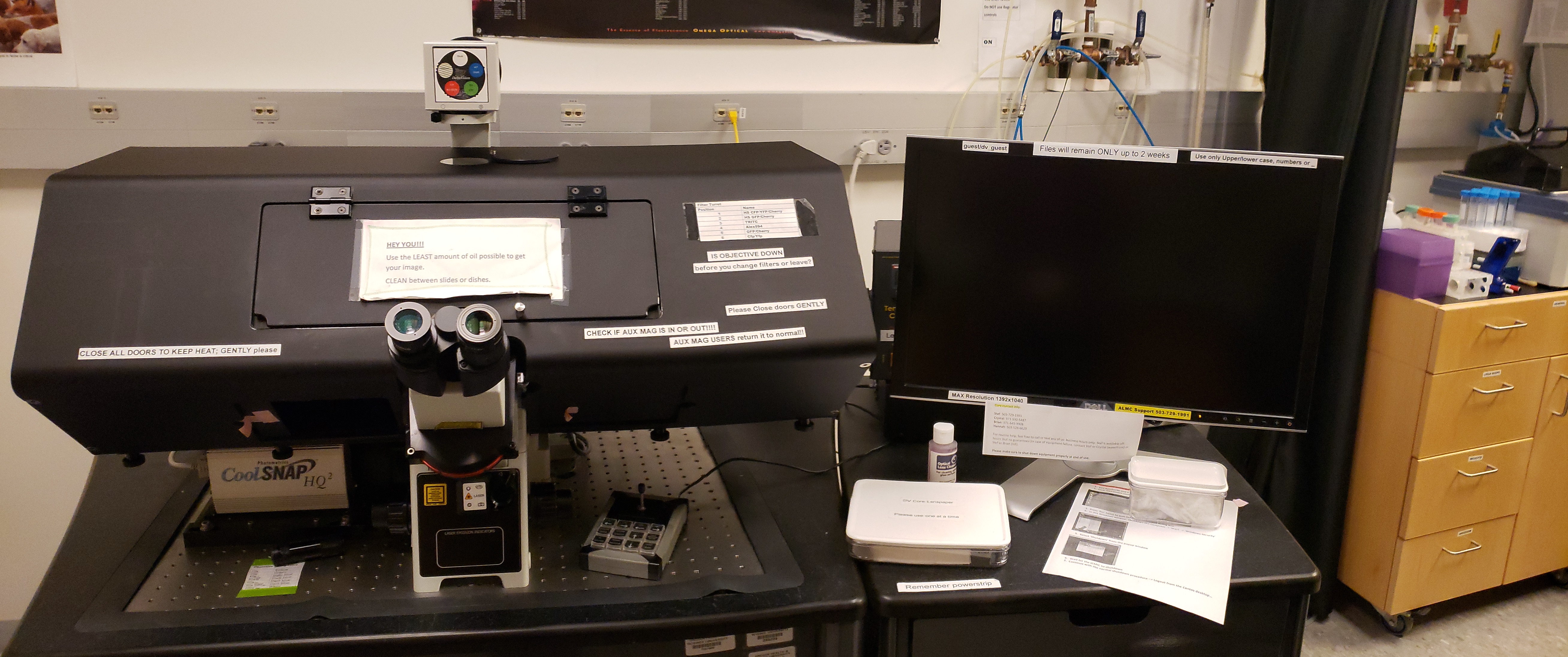Delta Vision widefield scope for deconvolution

The Deltavision CoreDV Widefield Deconvolution System is a high resolution widefield microscope for acquiring images of live or fixed samples. The system is built on an Olympus IX71 inverted microscope and features an LED transmitted light source for differential interference contrast and a 7-color solid state illumination unit for exciting fluorophores across the visible spectrum. Polychroic beam splitters, optimized for imaging with Blue-Green-Red-FarRed fluorophore combinations in fixed cells or CFP/YFP and GFP/RFP combinations of expressed proteins in living cells, are combined with emission switching through fast filter wheels. Images are captured on a Nikon CoolPix HQ cooled CCD camera. The motorized stage is controlled by XYZ nanomotors for accurate z-stack and point-visiting functions.
The strengths of this system over laser-scanning confocals is the sensitivity to detect dimmer signal in thinner specimens. For increasing apparent contrast and resolution in the standard widefield images acquired, 3D data sets are deconvolved based on the iterative constrained algorithm of Sedat and Agard. There is a offline computer station available for this process.
Another advantage of this system over laser-scanning confocals is the gentle illumination and speed. While not as fast as a spinning disk, it combines multiple color and Z-stacking to acquire images at rates fast enough to observe many cellular functions of interest. Temperature, humidity and CO2 environment are tightly controlled and a continuous focus device maintains the sample in perfect registration with the objective. The system is also capable of performing 3-line laser-based total internal reflection fluorescence microscopy (405 nm, 488 nm, and 561 nm) (TIRF).